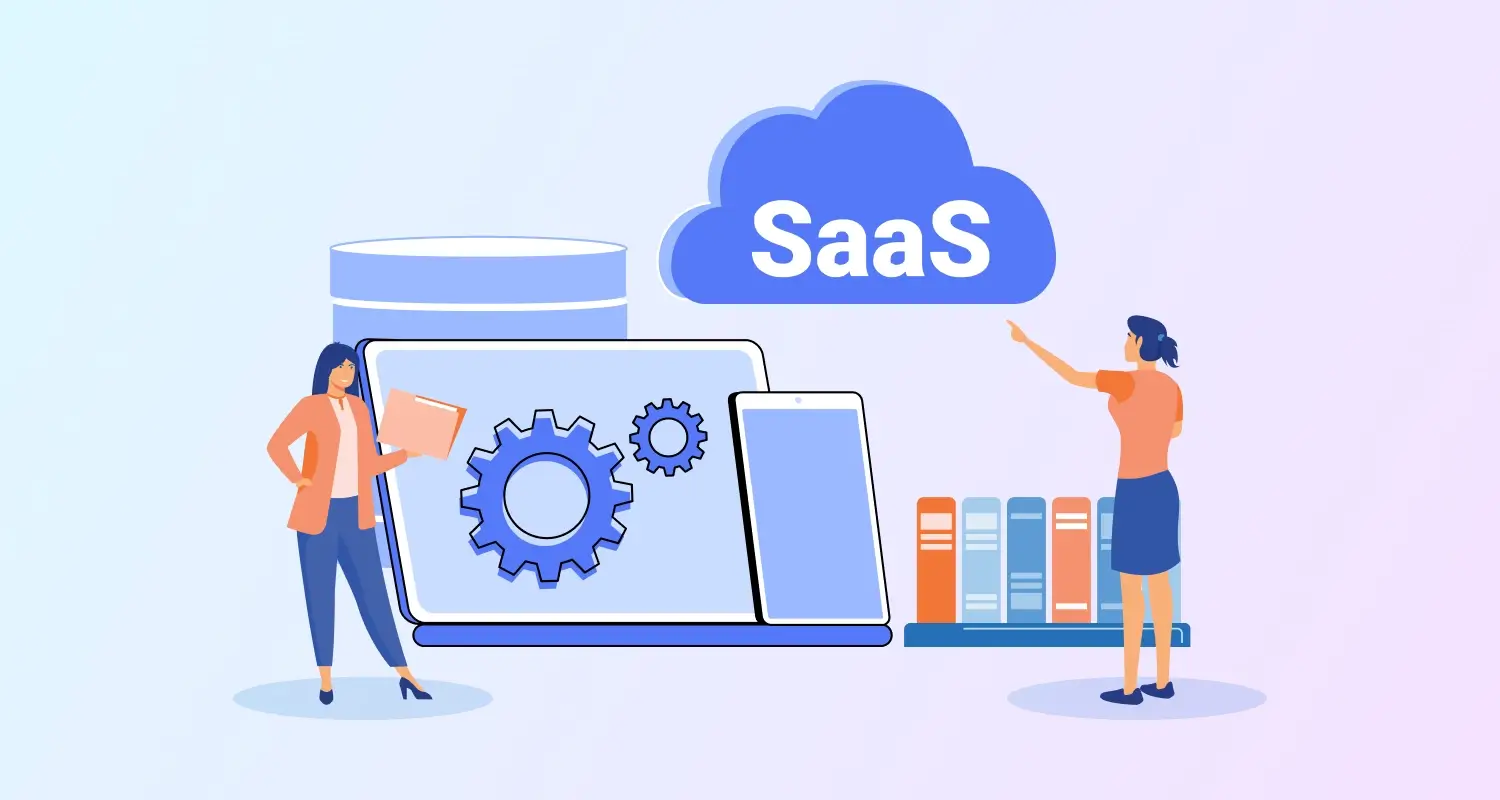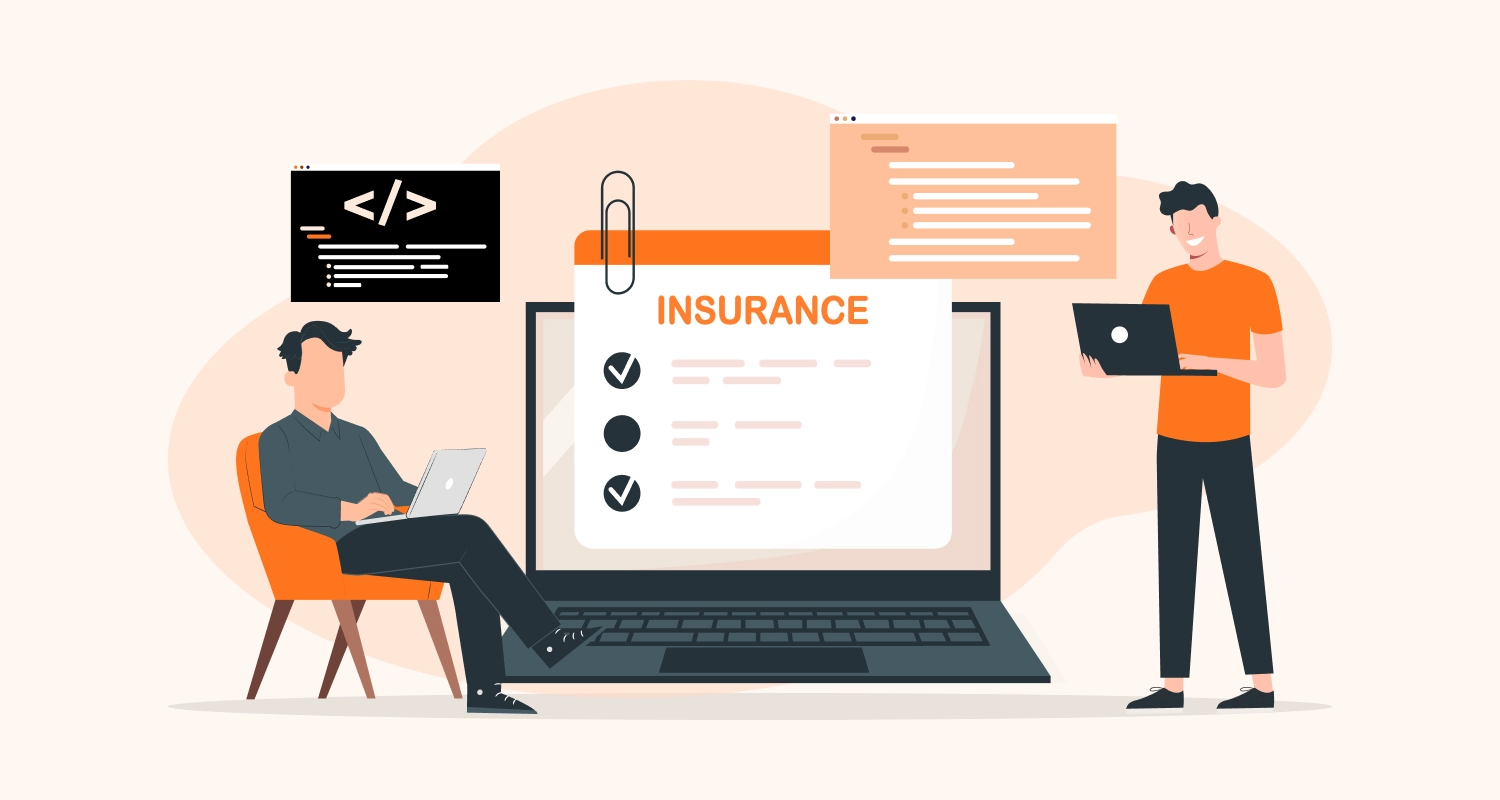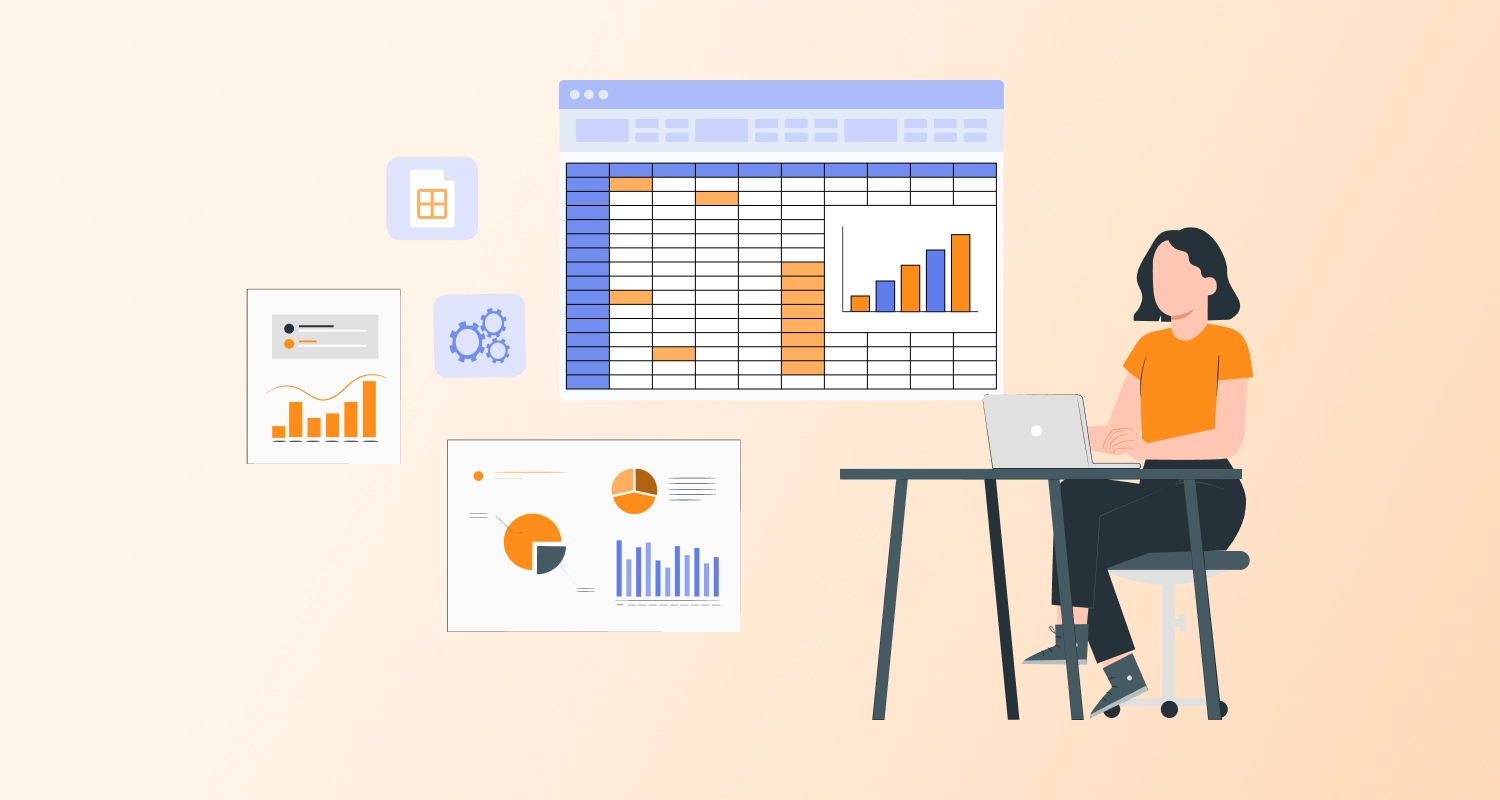The internet has absolutely transformed our lives and made data all the more accessible! At the same time, the large amount of data makes it difficult to store and manage it. Unlike traditional forms of learning, e-learning has brought hundreds, if not thousands, of resources at our fingertips. Wouldn’t it be easier if these resources/courses could be accessed via a single system? Well, this is where Learning Management System Development comes in.
Does the concept interest you? Do you want to create a fully-functional and easy-to-use Learning Management System (LMS)? To help you out, we have created a full-fledged guide that breaks down the basics of Learning Management System Development to help you develop one from scratch.
So, what are you waiting for? Let’s dive right into it!
What Exactly Is A Learning Management System All About?
A learning management system is a software application that automates the complete learning process. This makes it easier to deliver educational content, lesson plans, and resources in a compact manner. Moreover, it becomes easier for administrators to create and manage training programs for imparting quality education.
Another advantage of modern Learning Management Systems is that they are capable of handling videos, images, and audio files. This ensures learning is not monotonous and the process becomes much easier. Most LMS also have grading systems and offer continuous assessments to ensure students stay on track and are evaluated.
According to a report conducted by Capterra in 2020, 36% of colleges and universities for higher education used an LMS. Another report shows that the market size value of Learning Management System Development was USD 18.7 billion in 2022. This number is projected to reach USD 43.6 billion in 2027 with a CAGR Rate of 18.4%.
This is why more and more software development agencies are offering Mobile App Development Services revolving around building an LMS from scratch.
What Are The Different Components of Learning Management Systems?
Whether you have educational app ideas that you want to bring into existence or want to build an educational software development company, you need to know about the different components of learning management system. So, let’s have a brief look at each of these LMS components.
1. Administrative Panel
This module of an LMS is built to allow administrators to control the system and modify it as required. For example, it is important to add or modify learning materials to ensure the content is relevant. This function cannot be performed without an administrative panel.
Some other actions that this panel allows are – communication with learners through some tools, evaluating course progress, modifying user access, and creating different user roles (i.e. teachers, students, visitors, etc.).
To ensure that an LMS always stays up-to-date with recent trends and can address learning gaps from time to time, developers need to focus on developing the administrative panel when building an LMS.
2. User Panel
When creating an LMS, another component that developers should focus on is the user panel. This module allows users to interact with the system, i.e. sign up for courses, check out the materials available, learn, take assignments, and much more.
If you want your LMS to be user-friendly, you need to be open to feedback. Creating discussion groups and adding feedback forms when you build LMS from scratch can help realize this!
To ensure the different components are developed properly, hire experienced developers with expertise in Learning Management System Development or an established Education Software Development Company. In turn, this will help save both time and money.
How Many Types Of Learning Management Systems Can Be Found?
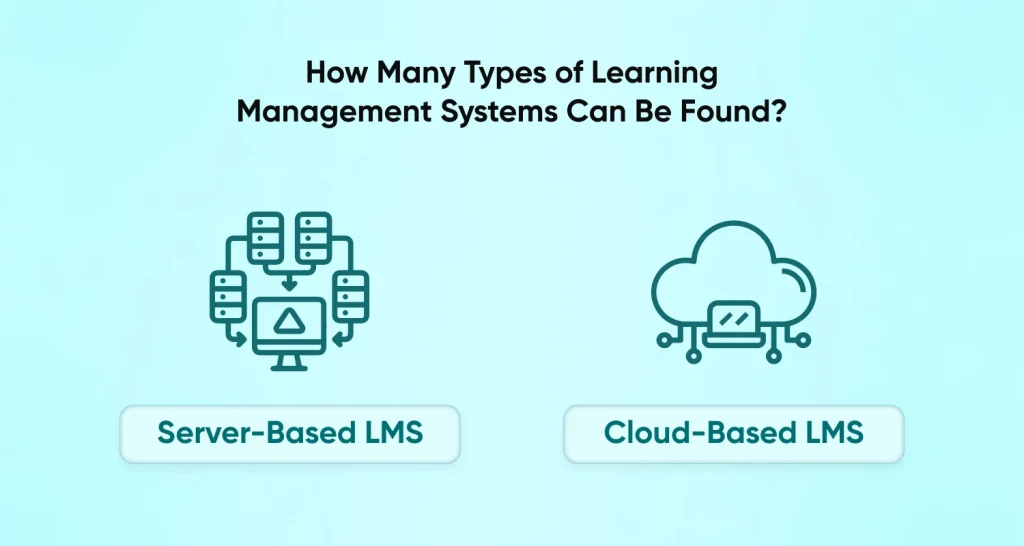
To cater to the different needs of every industry, there are different types of learning management systems available. These are:-
- Server-Based LMS – These kinds of LMS are installed on the server of the business/organization and can be accessed by learners via a browser. Generally, universities and large corporations use a server-based LMS due to the increased security and control it follows. The only disadvantage is that the overall costs are too high.
- Cloud-Based LMS – Most distance learning platforms use a cloud-based LMS for their courses and resources. Generally, cloud-based technologies are used in Learning management system development because of their simple architecture and low costs.
How Is A Learning Management System Designed?
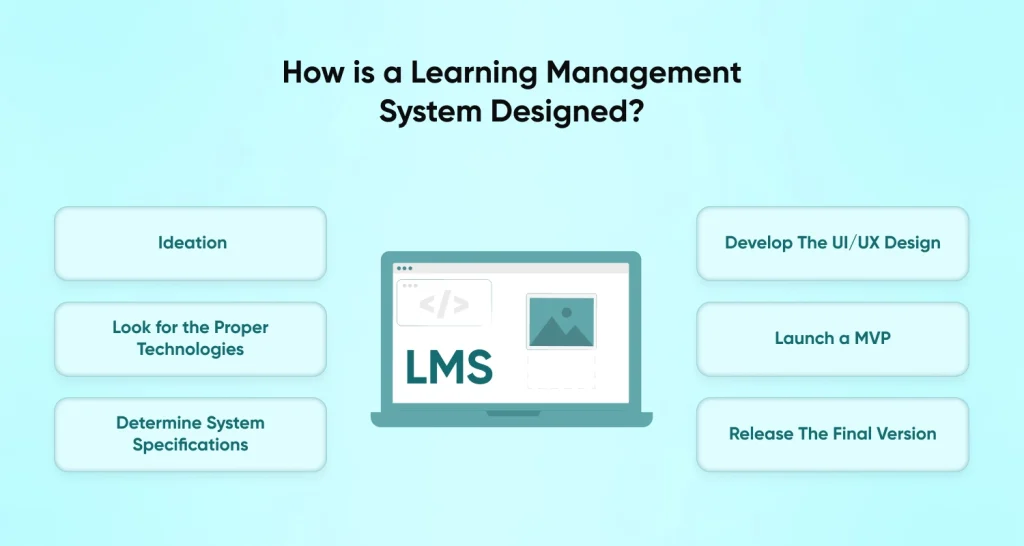
Before you get into learning management system development, it is important to know what different steps it entails. The following section will break down the complete learning management system design process to help you build an exceptional one. So, let’s jump right into it!
1. Ideation
Before you jump right into the different technologies needed, it is important to determine the purpose of your LMS. After all, one can find several similar applications, making it important to conduct an in-depth analysis. Some actions involved in this step include:-
- Thinking about the purpose of your LMS
- Dividing responsibilities among proper teams
- Developing a timeline and a development plan
- Researching the market
2. Look For The Proper Technologies
A major factor that decides the cost of learning management system development is the technologies used. The tech stack you use to build your LMS will determine the design, working, and functionalities of both the system’s front-end and back-end. Other than that, you should also choose a database management system (DBMS) for proper data storage and analysis. Some common and popular DBMS technologies are – MySQL, PostgreSQL, and MongoDB. In the case of cloud-based LMS, you should check out Amazon Web Services (AWS).
3. Determine System Specifications
After the web stack is chosen, it is important to move to the next step in learning management system design. In this stage, you need to think about the different functions that you want to include in the system. It will also help you develop a budget and assign responsibilities. You can also start developing the documentation along with figures like use-case diagrams, sequence diagrams, and interaction diagrams.
4. Develop The UI/UX Design
As soon as the system specifications are decided, the conceptualization of the LMS should be started. Get your UI/UX team to interview users to understand their needs and behavior. After this, they can proceed and create mockups and wireframes to help visualize the LMS. As soon as these designs are finalized, they are passed on to the development team. These wireframes will help break down the different system modules making it easier for the LMS developers to understand the requirements.
5. Launch A MVP
Since development is a continuous process that involves examining and modifying different LMS features, it is best to launch a minimal viable product (MVP). Generally, the MVP offers only the core functionalities of the LMS. At this stage, users are generally a part of the Beta Testing group and their feedback is used to modify the system. This helps in continuous and further product development. Moreover, it ensures that the final product is in accordance with user preferences and needs.
6. Release The Final Version
The beta-testing in step 5 makes it easier for companies to release a good, working LMS. But, you need to ensure that the pain points of users were addressed and solutions were provided. Before the software is released, review its documentation and test the different modules. After deploying the software, users should be provided with support to help ensure they do not face any issues. It also helps ensure that future issues (if any) are reported to the LMS developers and resolved.

What Are Some Pointers That Can Help In Creating An LMS?
- Proper Integration of Third-Party Applications – Third-Party Applications and Services make it easier to build modules. However, one needs to have in-depth knowledge of how these applications work and can be integrated into the LMS.
- Allows Different Media Formats – An LMS should not only support text, but also videos, pictures, and audio. Hence, developers should also consider the different media formats during the learning management system development process.
- Simple And Easy-To-Use Login Portal – Generally, learning management systems are accessed by students, teachers, principals, and parents. Creating a single login point for them makes the learning process simpler.
- Offer Customization When Necessary – The learning process for one student is never the same for another. To ensure that your LMS is beneficial for all, offer customized and adaptive options as and when necessary.
What Are The Different Features You Need To Add To Make Your LMS The Best?
It is a common misconception that an LMS is only a large database of learning content and resources. However, some features can be easily added to ensure it is so much more than that.
Try to include these features in your LMS and make it the industry’s best:
- Responsive Design – This makes the LMS accessible through a wide range of devices. So, whether you access the system through a desktop, smartphone, or tablet, the best-suited version is displayed.
- Reports and Analytics – The feature helps analyze learners and shows admins how effective their content is.
- Course Catalog – This section offers an overview of the different courses, resources, and learning materials available to learners.
- Learner Support – The feature helps learners use the system properly and ensures their problems are addressed on time.
- Social Media Tools – Some learning management systems allow learners to share their progress with friends and compete with them. This gives rise to better collaboration.
Conclusion
Since learning management systems are an important part of e-learning, it is important to know how they’re designed. After all, these systems can help make learning simpler and more fun. They also help instructors easily manage and curate content for the students. Moreover, when these systems address user pain points, they can help generate revenue.
We hope the above article helped break down the complete Learning Management System Development process. In case you’re confused about how to approach the design process or are under a time constraint to create an LMS, get in touch with us! We help you hire dedicated developers with years of industry experience who can build an LMS that helps achieve your business goals.
So, what are you waiting for? Get your LMS developed and conquer the industry!
Frequently Asked Questions
How to Build a Learning Management System?
Although the complete learning management system development process is a bit complicated, we’ve broken it down into simple steps. These are:
Ideation
Searching For Technologies
Deciding On System Specifications
Creating The UI/UX
Launching The First Version
Deploying The Final System
How Much Do I Need to Invest in Building an LMS From Scratch?
The exact cost of building an LMS from scratch depends on various factors like – functionalities included, tech stack used, the inclusion of AI, and much more. You can get in touch with our team of experienced developers for a price quote.
How Long Will It Take for My Development Team to Build an LMS?
Similar to the cost of building an LMS, the time frame varies based on different factors. In case you want an estimated timeline, you can get in touch with us for a discussion.





